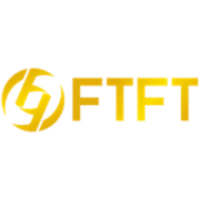
FMP

Future FinTech Group Inc.
FTFT
NASDAQ
Future FinTech Group Inc., through its subsidiaries, operates online shopping platforms in People's Republic of China. It operates in four segments: Shared Shopping Mall Membership Fee, Fruit Related Products, Sales of Goods, and Others. The company operates Chain Cloud Mall (CCM), a real-name blockchain based e-commerce platform that integrates blockchain and internet technology; and NONOGIRL, a cross-border e-commerce platform. It also engages in coal and aluminum ingots supply chain financing and trading; financial technology service; and cryptocurrency market data and information service businesses, as well as services related to the application and development of blockchain-based technology in financial technology. The company was formerly known as SkyPeople Fruit Juice, Inc. and changed its name to Future FinTech Group Inc. in June 2017. Future FinTech Group Inc. is headquartered in New York, New York.
0.86 USD
-0.06 (-6.98%)
DuPont Analysis
The DuPont analysis, pioneered by the DuPont Corporation, offers a structured approach to assessing fundamental performance. It involves breaking down the return on equity (ROE) into various components, aiding investors in comprehending the factors influencing a company's returns.
ROE = Net Income / Average Total Equity
ROE = (Net Income / Sales) * (Revenue / Average Total Assets) * (Average Total Assets / Average Total Equity)
The company's tax burden is (Net income ÷ Pretax profit). This is the proportion of the company's profits retained after paying income taxes. [NI/EBT] The company's interest burden is (Pretax income ÷ EBIT). This will be 1.00 for a firm with no debt or financial leverage. [EBT/EBIT] The company's operating income margin or return on sales (ROS) is (EBIT ÷ Revenue). This is the operating income per dollar of sales. [EBIT/Revenue] The company's asset turnover (ATO) is (Revenue ÷ Average Total Assets). The company's equity multiplier is (Average Total Assets ÷ Average Total Equity). This is a measure of financial leverage. Profitability (measured by profit margin) Asset efficiency (measured by asset turnover) Financial leverage (measured by equity multiplier)